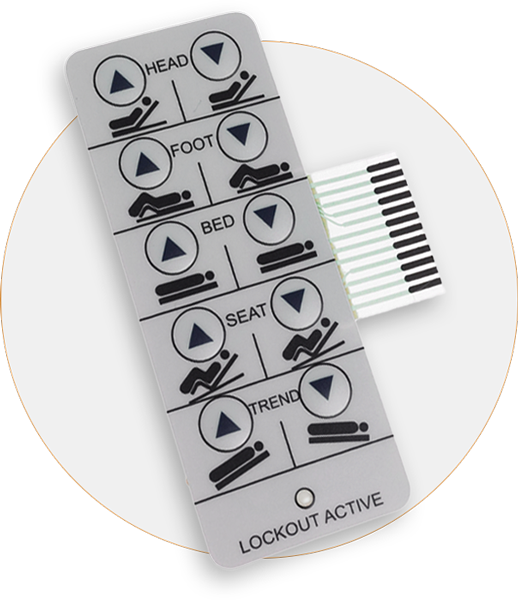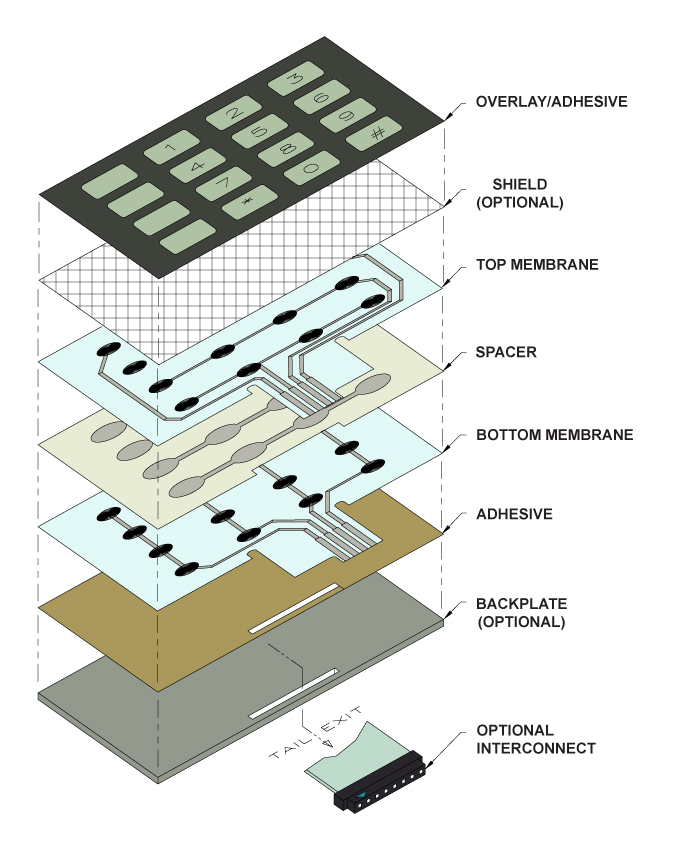Membrane Change Modern Technology: The Trick to Reliable and Cost-efficient Interfaces
Membrane layer switch modern technology has actually emerged as a crucial component in the style of user interfaces, providing both reliability and cost-effectiveness throughout a diverse variety of applications. As we discover the diverse advantages of membrane layer buttons, their capacity for technology raises inquiries about future applications and advancing patterns.
Comprehending Membrane Layer Switch Over Technology
Membrane switch innovation is a widely made use of interface option in different electronic tools, supplying a smooth blend of capability and style. This technology integrates several layers of materials, usually containing a graphic overlay, spacer layer, and a circuit layer. The graphic overlay displays the user interface elements, while the spacer layer separates the circuit layer from the overlay until a user triggers a switch.
When pressure is put on the overlay, the circuit layer finishes the electrical circuit, sending out a signal to the gadget. This device enables numerous arrangements, including tactile feedback and backlighting options, improving user communication. Membrane switches are usually made utilizing long lasting products such as polyester or polycarbonate, making sure durability and resistance to ecological variables like dampness and dust.
The adaptability of membrane layer switches enables their application in varied sectors, consisting of clinical devices, customer electronic devices, and industrial controls. Their compact layout permits combination right into space-constrained atmospheres, giving a reliable customer interface without compromising visual charm. Understanding the intricacies of membrane button innovation is essential for suppliers and designers seeking to create dependable and effective human-machine interfaces.
Key Advantages of Membrane Layer Switches
While numerous user interface remedies exist, membrane switches offer distinct benefits that make them a favored choice in numerous applications. Among the main advantages is their longevity; membrane switches are designed to withstand extreme environmental conditions, including wetness, dust, and temperature level changes, making sure durable performance. This durability considerably lowers the requirement for constant replacements, consequently decreasing total upkeep expenses.

In addition, membrane layer buttons are lightweight and small, making them appropriate for applications where area is restricted. Their low-profile layout adds to a sleek appearance without endangering functionality.
Cost-effectiveness is also a remarkable benefit, as the production procedure for membrane layer changes has a tendency to be cheaper contrasted to traditional mechanical buttons. This cost, integrated with their reliability and convenience of setup, placements membrane switches over as a functional service for a wide variety of markets looking for reliable and efficient individual interfaces.
Applications Throughout Numerous Industries
How do membrane layer switches adapt to the varied requirements of various markets? Membrane button innovation is increasingly identified for its versatility, making it ideal for a large range of applications across multiple sectors.
In consumer electronic devices, membrane layer buttons offer a portable solution for remotes and home appliances, boosting individual experience with intuitive design. Furthermore, the industrial market leverages membrane buttons for machinery control panels, taking advantage of their resistance to extreme atmospheres, such as dampness and dust.
Armed forces and aerospace applications likewise utilize membrane switches for their reliability and capacity to stand up to extreme problems, ensuring functional efficiency in important situations. In addition, the food and drink sector takes on these switches for automated systems, where hygiene and ease of procedure are paramount. Inevitably, membrane layer buttons are customized to satisfy the one-of-a-kind demands of each sector, showing their crucial role in modern-day technology interfaces
Layout and Personalization Options

In the realm of membrane switch technology, layout and modification choices play a crucial role in improving capability and individual communication. These switches can be tailored to fulfill details operational requirements and aesthetic preferences, making them versatile parts in numerous applications.
Among the primary modification alternatives is the format of the switch itself, which can be designed to accommodate distinct interface and ergonomic considerations. By readjusting the shape, dimension, and setup of switches, producers can produce user-friendly designs that assist in convenience of usage. Furthermore, the consolidation of different colors and visuals overlays permits branding and boosted presence, making certain that individuals can promptly recognize functions.
Furthermore, membrane buttons can be crafted with different responsive feedback systems, such as increased switches or distinct clicks, to enhance the individual experience. Different materials can also be picked for toughness and ecological resistance, dealing with elements such as moisture, temperature variations, and chemical exposure.
Ultimately, the substantial design and customization options readily available in membrane layer button modern technology equip organizations to see page create customized options that not just satisfy useful needs however also align with their branding and functional demands.

Future Fads in Membrane Switches
As membrane layer button innovation proceeds to evolve, future trends are significantly focused on enhancing customer experience and incorporating advanced performances. One substantial pattern is the combination of touch-sensitive and capacitive modern technologies into typical membrane buttons. This growth enables for even more user-friendly customer interfaces, supplying tactile feedback while maintaining a streamlined layout.
Another emerging trend is the use of eco pleasant materials, click for source driven by the growing need for sustainable production techniques. Producers are looking for to reduce their carbon footprint by using recyclable substrates and low-impact inks, aligning with international sustainability objectives.
Moreover, the surge of the Web of Things (IoT) is motivating the consolidation of smart features into membrane layer switches. Improved connection choices will certainly allow devices to communicate with each various other, permitting for smooth assimilation right into more comprehensive systems.
Additionally, advancements in printing innovations, such as electronic printing, are enabling better design versatility and customization. This enables producers to create elaborate designs and vivid shades cost-effectively.

Verdict
In final thought, membrane layer switch modern technology stands for an essential advancement in customer interface design, providing substantial benefits in longevity, modification, and cost-effectiveness. Its widespread applicability across diverse markets underscores its importance in contemporary technology. As innovations proceed to emerge, particularly in touch-sensitive user interfaces and lasting materials, the capacity for membrane layer switches over to enhance customer experience and performance stays encouraging. Proceeded expedition of this innovation will likely generate additionally enhancements and expand its extent in future applications. you can find out more